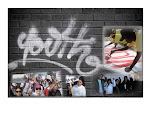Assignment:
You will create a research project in which you choose one topic of interest from the 1920s and argue it.
You’ll support your argument using peer-reviewed/ scholarly research and textual excerpts from The Great Gatsby. Your composition will have two components:
1) You will create a slide show in which you organize your ideas using visual, digital, audio, and print sources to argue and support a particular position.
2) Afterward, you will use the information you assembled in the slide show to write a 2-3 page paper.
Objectives:
You will choose and become an expert in an area of your own interest from the 1920s.
You will design an argument statement.
You will gather research from books and online databases and include excerpts from research resources to support your argument statement.
You will support your argument through textual excerpts from The Great Gatsby.
You will interpret the peer-reviewed/ scholarly and textual evidence to create your own unique voice.
You will manipulate media and design to suite your purpose and genres.
Purpose:
The purpose of any learning event is to explore and extend your thinking. These research compositions will accomplish that purpose by giving you the opportunity to express your ideas through a series of meaningful choices regarding selection of information, interpretation of resources, writing, design, and public presentation.
Whenever you synthesize your prior knowledge with new knowledge, you change as an individual. Ultimately, you share a new sense of self through new ideas, feelings, and thinking, which helps you to connect better to others in your community and the world beyond it.
PART ONE:
Overview of your Research Project
Slide/ section one: Title slide
The title slide is the argument, or main persuasive idea, of your overall project. Titles in the academic world have two parts. The first part of the title is often a clever play-on-words; the second part of the title points to your specific argument and names the primary text around which you are designing your discussion.
Here are example titles:
“Three Houses Divided: The Great Gatsby and Metaphors of Socio-economic Class”
“Carelessness and Culture: Playing Forward The Sun Also Rises to the New Millennium”
“Spiritual Shallowness: How Our Town Can Inform Contemporary Society”
Slide 2: Diagram slide
The diagram slide describes relationships among concepts. The diagram slide is a one slide representation of your argument (which doesn’t refer to the primary text, but, rather, to universal ideas), the key terms from your evidence, and the core ideas of your entire project. The diagram slide should be composed primarily of images/ visuals/ schematics. You should have very few words on your diagram.
The Body of Your Project: Three Slides
Each slide should explain your argument in one of three different ways. Each slide discusses a dimension of the particular point of view upon which you have decided. To construct a body slide, you must adhere to a formula which is known as PEPI: Point, Evidence from the primary text, Peer-reviewed/ scholarly research, and Interpretation. These are the slides in which your unique voice should shine.
Slide 3: PEPI a
Point a) Write one topic sentence that describes the situation you want to explore in this slide. Do not refer to the primary text in this topic sentence.
Evidence from the primary text a) Pull one excerpt from the primary text that supports the point you made above.
Peer-reviewed/ scholarly research a) Pull one excerpt from research that connects to the point you made above.
Interpretation a): Synthesize the point, evidence from the primary text, and peer-reviewed/ scholarly research into one sentence in which your own unique voice shines through. Remember: interpretations answer “why” and “how” not “what.”
Slide 4: PEPI b
Repeat the steps above, but, this time, use a second point that explains your argument. Of course, you’ll use a new excerpt from the text, a new peer-reviewed/ scholarly article except (yes, that means a new author, too), and a new approach to interpreting it all.
Slide 5: PEPI c
Repeat the steps above, but, this time, use a second point that explains your argument. Of course, you’ll use a new excerpt from the text, a new peer-reviewed/ scholarly article excerpt (yes, that means a new author, too), and a new way to interpreting it all.
Slide 6: Synthesis Slide
The synthesis slide draws together the most important information from your five previous slides. It captures the essence, totality, and significance of the messages that you have targeted. Suggestion: copy the most important words and phrases from each of the PEPI slides, and rewrite them in a new and invigorating way in your synthesis.
Have fun! Be creative! Make a research project shine with your unique voice!
PART TWO: The MLA Research Paper
You will draw the majority of the writing and ideas for this paper from your research project. Thus, your MLA research paper will utilize the PEPI formula so you can write with academic voice and authority.
Print length: 2-3 pages, not including the Works Cited page.
Style: The paper must cite all sources using MLA format, including in-text citations.
Number of textual excerpts: at least three
Number of research sources: at least three (with three different authors)
In these two projects, students will…
communicate effectively by listening, speaking , writing, using a variety of media and techniques
• read critically with understanding
analyze and solve problems effectively by…
o identifying, clarifying and describing issues/problems;
o locating, organizing and processing information from various sources;
o utilizing thinking skills and reasoning strategies;
o creating, testing and justifying solutions and conclusions
08 December 2009
Subscribe to:
Post Comments (Atom)



No comments:
Post a Comment